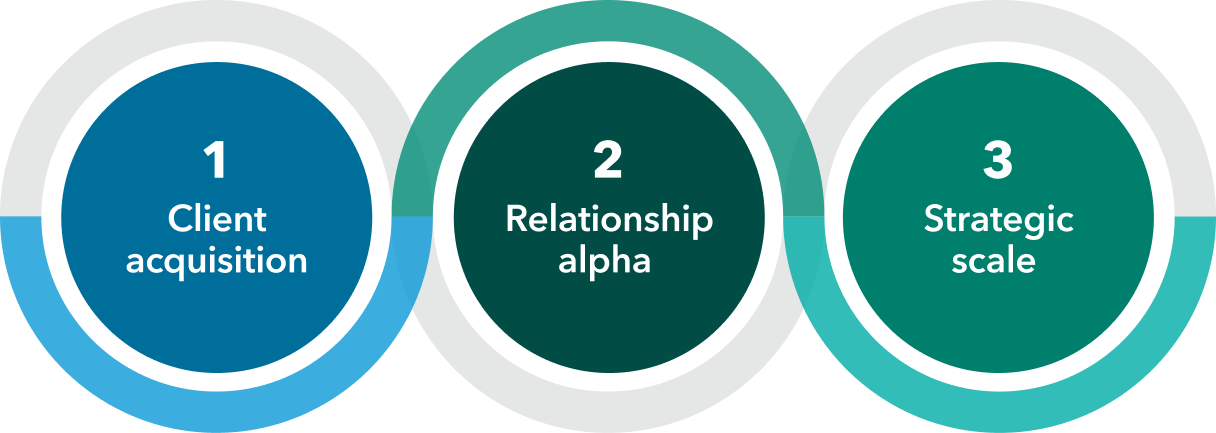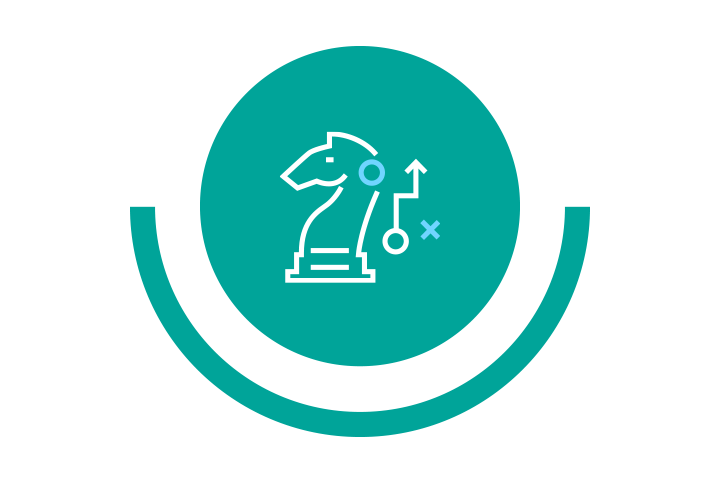* Organic growth is defined as rising assets under management not attributable to acquisitions or upward movements in capital markets.
Three crucial routes to business growth
In Capital Group's Fourth Annual Pathways to Growth Advisor Benchmark Study, we surveyed more than 1,500 advisors and RIAs to answer the question: Why did some advisors experience twice the practice growth of their average peers? Our research identified certain skills that helped drive growth across the board, for all kinds of advisors.
We categorized these higher impact skills into three distinct groupings or "pathways." Understanding these pathways and focusing on the highest value skills within each can help drive growth.

Find out more about each of these pathways below

How do your skills measure up?
With just a few questions, you can find out where you stand and find areas of opportunity in your practice. Plus, get access to valuable content designed to improve your skills.

Client acquisition
Among the three pathways, client acquisition skills and activities are most highly correlated to growth.
New client focus: A clear driver of organic* growth.
For all advisors in our study, 33% of AUM growth came from new clients. But high-growth advisors saw greater-than-average gains. Indeed, assets from new clients were their biggest drivers of AUM growth. So it's not surprising to learn that those in the high-growth segment are more likely to focus on client acquisition and have higher levels of skill in areas like branding and prospecting. And they are much more intentional about applying those skills strategically.
For high-growth advisors, new clients were the biggest AUM driver in 2023
Client acquisition skills: Higher for high-growth advisors but low overall
Build your client acquisition skills
Our first Pathways to Growth study revealed that branding, marketing, referrals and prospecting play a critical role in helping high-growth advisors excel. That's why we've curated content built specifically to help you build client acquisition skills.

Relationship alpha
Broadening and customizing your service offering and articulating its benefits creates deeper client engagement and reinforces value.
High-growth advisors offer more services to more clients
Each edition of our study has increasingly confirmed that certain services have become table stakes offerings for nearly all advisors. These include retirement and financial planning and investment management. Higher growth advisors elevate their client service by providing more value-added services, such as estate and charitable planning. Indeed, offering 10 or more services is strongly correlated with higher-than-average growth.
Highest growth practices offer more services to all clients
Browse our content collection:

Strategic scale
High-growth advisors seek to “professionalize” their practice by implementing processes and procedures common to today’s most sophisticated organizations.
Thinking like a CEO
High-grow advisors seek process improvements to increase team effectiveness, create a better client experience and improve efficiency. They engage in dynamic business planning informed by key performance indicators. They also seek ways to standardize and scale and are more likely to employ standard operating procedures and leverage technology to automate routine processes. Within their teams, they delineate expectations, formalize responsibilities and pursue transparency.
Highest growth advisors promote accountability and assess impact
Source for all chart data: Capital Group Advisor Benchmark Survey, 2024
Browse our content collection:

Download our latest Pathways to Growth study and learn:
- Skills most correlated to practice growth
- The pivotal role of client acquisition
- "Table stakes" vs. value-added service
- Insights on running your practice like a CEO
- Six steps on your pathway to growth

